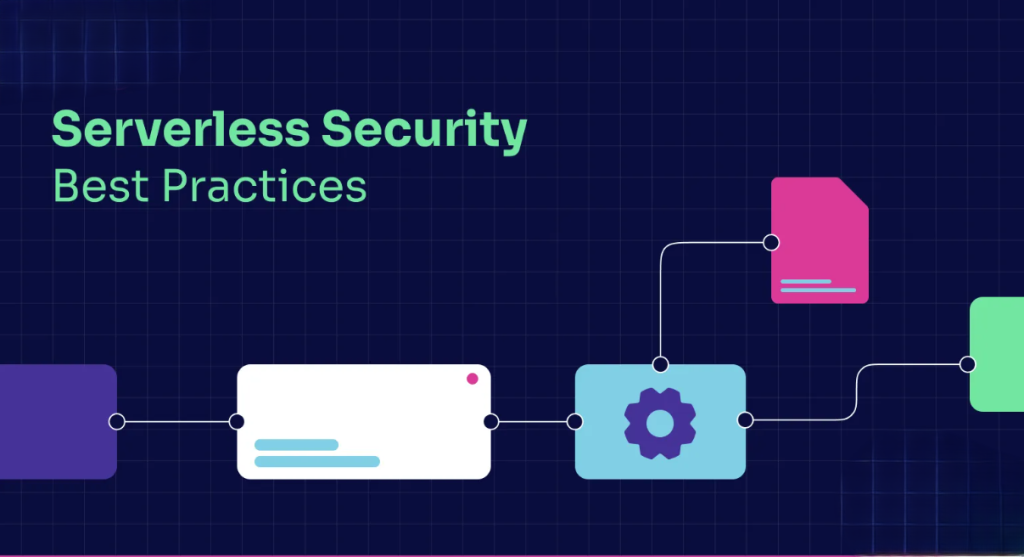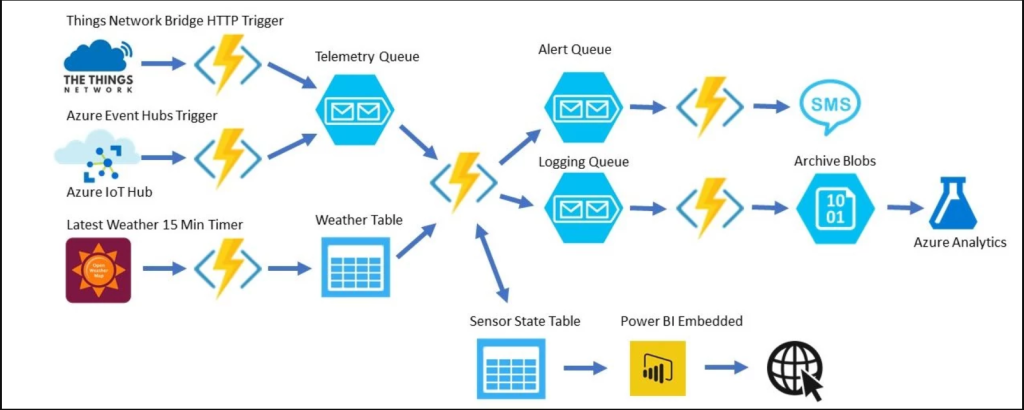Upgrade & Secure Your Future with DevOps, SRE, DevSecOps, MLOps!
We spend hours scrolling social media and waste money on things we forget, but won’t spend 30 minutes a day earning certifications that can change our lives.
Master in DevOps, SRE, DevSecOps & MLOps by DevOps School!
Learn from Guru Rajesh Kumar and double your salary in just one year.

Here’s a comprehensive post titled “Serverless Security: Best Practices for Protecting Your Apps” with expanded content for each section:
Understanding Serverless Security
Serverless computing is becoming a popular approach for building and deploying applications due to its scalability, cost efficiency, and ease of use. However, as with any new technology, serverless computing comes with its own set of security challenges. Unlike traditional cloud models, where developers manage servers and infrastructure, serverless computing abstracts these responsibilities, leaving the cloud provider to handle most of the infrastructure management. While this provides great benefits in terms of simplicity, it also places greater emphasis on securing the code and access to resources within a serverless environment.
In this post, we’ll explore the best practices for securing serverless applications, focusing on ensuring that functions, data, and access are well-protected, while maintaining the flexibility and scalability that serverless computing offers.
Key Features of Serverless Security
- Event-Driven Execution: Serverless functions are triggered by events, meaning security must be implemented at both the function level and the event source.
- Isolation: Functions run in isolated environments, but it’s essential to configure access controls to ensure that malicious actors can’t exploit these environments.
- Minimal Infrastructure Management: Serverless computing offloads infrastructure management to the cloud provider, but developers must focus on securing the application layer.
- Granular Permissions: Unlike traditional approaches, serverless allows developers to set very granular permissions for each function, reducing the attack surface.
1. Secure Access to Serverless Functions
One of the most crucial aspects of serverless security is ensuring that only authorized users or services can invoke functions and access resources. Serverless platforms typically provide multiple methods for securing access to applications and ensuring that the system is only accessed by legitimate entities.
Best Practices for Secure Access
- Use Fine-Grained IAM (Identity and Access Management) Roles: Ensure that each function has a dedicated IAM role with the least privilege access, allowing it to perform only the required actions and no more.
- Authentication and Authorization: Implement OAuth or API keys to authenticate requests and validate that they come from trusted sources. Use JWT (JSON Web Tokens) for secure token-based authentication.
- Encrypt Sensitive Data: Ensure that sensitive data (e.g., API keys, passwords) is encrypted before transmission. Use HTTPS for all communication between services and functions to ensure data is secure in transit.
- Use API Gateway for Secure Access: When exposing serverless functions through APIs, use API Gateway to implement rate-limiting, authentication, and logging for all incoming requests.

2. Secure the Code in Serverless Functions
Securing the code running inside serverless functions is paramount, as serverless applications are often more vulnerable due to their distributed nature. Protecting against common attack vectors, such as injection attacks or code execution vulnerabilities, is a key part of serverless security.
Best Practices for Securing Code
- Use Secure Coding Practices: Write secure, well-tested code that avoids common vulnerabilities such as SQL injection, cross-site scripting (XSS), and buffer overflows. Regularly update dependencies to patch known vulnerabilities.
- Validate Input and Output: Always validate inputs to serverless functions, especially if they come from external sources. Ensure that malicious input is properly sanitized before use.
- Limit External Dependencies: Minimize the use of third-party libraries or services, as these can introduce vulnerabilities. Only use trusted, verified packages and keep them up-to-date.
- Apply Code Reviews and Static Analysis: Perform regular code reviews and use static application security testing (SAST) tools to detect security vulnerabilities early in the development cycle.
#3. Data Protection and Encryption in Serverless Applications
In serverless architectures, protecting data—both at rest and in transit—is critical. Given that serverless applications often involve multiple services interacting with one another, data security becomes even more important, especially with the potential for sensitive data exposure.
Best Practices for Data Protection
- Encrypt Data at Rest and in Transit: Always use encryption (e.g., AES-256) for sensitive data at rest, such as in S3 buckets, and TLS/SSL for data in transit. Ensure that your cloud provider’s encryption features are enabled for databases, storage, and messaging queues.
- Use Secrets Management: Avoid hardcoding sensitive credentials such as API keys, secrets, or passwords in your code. Use tools like AWS Secrets Manager, Azure Key Vault, or HashiCorp Vault to store secrets securely.
- Segment Data: Use data segmentation strategies to minimize the exposure of sensitive data. This can include encrypting sensitive fields or using separate databases or storage containers for different data types.
- Control Access to Data: Set up access control policies to ensure that only authorized functions and services can access certain data. Use IAM policies to define who and what can access specific resources.
#4. Monitoring and Logging for Serverless Applications
One of the key challenges in serverless security is monitoring. Since serverless functions are highly distributed and ephemeral, traditional logging methods may not be sufficient. Ensuring that you can monitor, log, and audit function execution is critical for detecting suspicious activities, debugging, and complying with security standards.
Best Practices for Monitoring and Logging
- Enable Detailed Logging: Enable detailed logging for all function executions. Use services like AWS CloudWatch Logs or Azure Monitor to collect logs and monitor the health and performance of your functions.
- Use Distributed Tracing: Implement distributed tracing to follow requests across the entire application, even if they span multiple services or functions. This helps track data flow and identify potential security breaches.
- Monitor for Anomalous Behavior: Set up alerts for unusual activities, such as a sudden increase in requests, unauthorized access attempts, or elevated resource usage, which could indicate an attack or misuse of serverless functions.
- Automate Security Audits: Use tools that automate security audits for serverless applications. For example, tools like AWS Config, Azure Security Center, and CloudFormation Guard can help identify configuration issues and vulnerabilities in real-time.
#5. Handling Function Permissions and Least Privilege Access
A common mistake in serverless applications is granting overly broad permissions to functions or services. To minimize the attack surface, it’s important to apply least privilege access principles to each function, ensuring it can only access the resources it absolutely needs.
Best Practices for Managing Function Permissions
- Use Minimal IAM Roles: Grant serverless functions minimal IAM roles, allowing them to perform only the tasks required for their specific function. This limits the potential damage if a function is compromised.
- Avoid Wildcard Permissions: Avoid using wildcard permissions (e.g.,
*), as they grant access to all resources. Instead, specify explicit resource-level access in your IAM policies. - Audit Function Permissions Regularly: Conduct periodic audits of IAM roles and function permissions to ensure they comply with the principle of least privilege and that no unnecessary permissions have been granted.
#6. The Future of Serverless Security
As serverless computing continues to grow in popularity, securing serverless applications will become more complex. Emerging trends in serverless security focus on automating security, improving monitoring, and enabling better runtime protection.
Trends in Serverless Security
- Automated Threat Detection: Cloud providers are increasingly offering automated security tools to detect threats in serverless applications, using machine learning to spot suspicious behavior patterns and anomalies.
- Runtime Protection: Future serverless security solutions will likely include enhanced runtime protections, such as memory protection and function-level isolation, to guard against vulnerabilities in live functions.
- Zero Trust Models: The implementation of Zero Trust Architecture in serverless environments will continue to rise, focusing on ensuring that every request is authenticated, authorized, and encrypted, regardless of its source.
- More Granular Security Policies: As serverless platforms mature, we can expect more granular security policies that allow developers to define security boundaries at the function, service, and data levels more easily.
Prioritizing Security in Serverless Architectures
While serverless computing offers numerous advantages, including ease of use, scalability, and cost efficiency, it’s crucial to ensure robust security practices are in place to protect your applications. By following best practices for access control, data protection, function security, and monitoring, you can mitigate the risks associated with serverless architectures. As the technology evolves, keeping an eye on emerging trends and continuously improving your security posture will be essential to staying ahead of potential threats.
With the right security measures in place, you can confidently take advantage of the benefits that serverless computing offers, while ensuring the integrity and safety of your applications.